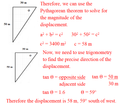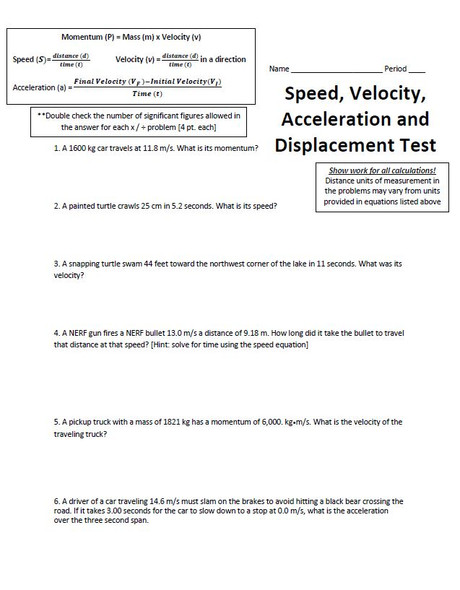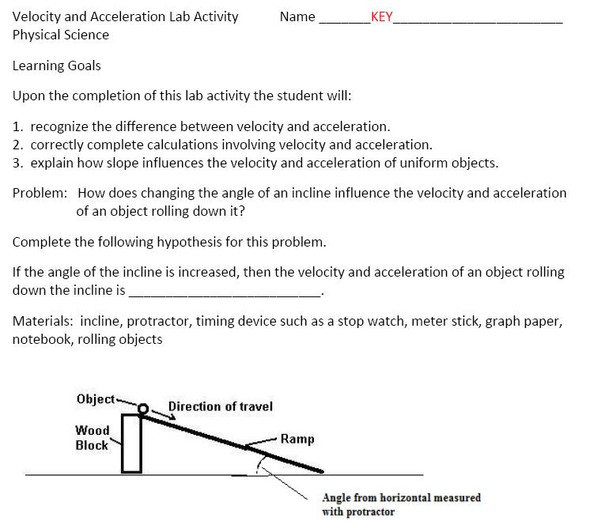Description
This zip file contains many different activities (54 pages of student handouts and 1 PowerPoint with a total of 47 slides) which can be used to compose a unit for physics students involving topics involving Speed, Velocity and Acceleration. Topics in this unit include distance, displacement, scalar and vector quantities, speed, velocity, average velocity, acceleration, free fall, calculations involving these topics as well as many other concepts.
A free fall lab activity is contained within this package. No specialized materials are required for this activity beyond computer access, a ruler and a calculator.
These materials may be used in Physics or advanced Physical Science classes. Knowledge of Calculus is not required to complete activities. The components this unit are a prerequisite to NGSS Standard HS-PS 2.1. The NGSS Standard, Common Core Standards and learning objectives addressed are indicated at the end of this description.
The components of this lesson package can easily be displayed to students using and LCD projector and may be readily modified into formats facilitating smartboard technology.
All documents except for the PowerPoint are included in both word as well as pdf format to allow editing for specific teacher needs. All answer keys are included. The specific contents of the learning package includes the following items (the page count for these items are actual student handouts as answer key page counts are not included):
- Speed, Velocity and Acceleration Scaffolded Notes (15 pp.)
- PowerPoint to accompany the Scaffolded Notes (47 slides)
- Introduction to Speed, Velocity and Acceleration Worksheet (26 questions) (6 pp.)
- Speed, Velocity and Acceleration Problems Sheet (14 questions) (4 pp.)
- Acceleration and Related Concepts Worksheet (40 questions) (9 pp.)
- Examining Free Fall Lab (involves a computer simulation and a hands-on activity) (7 pp.)
- Speed, Velocity and Acceleration Test (47 questions) (10 pp.)
- Learning Standards Including NGSS and Common Core (3 pp.)
Learning Standards and Objectives
The information in this unit is a prerequisite for:
HS-PS2-1. Analyze data to support the claim that Newton’s Second Law of Motion describes the mathematical relationship among the net force on a macroscopic object, its mass, and its acceleration.
Common Core State Connections
ELA/Literacy
RST.11-12.1 Cite specific textual evidence to support analysis of science and technical texts, attending to important distinctions the author makes and to any gaps or inconsistencies in the account.
RST.11-12.7 Integrate and evaluate multiple sources of information presented in diverse formats and media (e.g., quantitative data, video, multimedia) in order to address a question or solve a problem.
WHST.9-12.9 Draw evidence from informational texts to support analysis, reflection, and research.
Mathematics
MP.2 Reason abstractly and quantitatively.
MP.4 Model with mathematics.
HSN-Q.A.1 Use units as a way to understand problems and to guide the solution of multi-step problems; choose and interpret units consistently in formulas; choose and interpret the scale and the origin in graphs and data displays
HSN-Q.A.2 Define appropriate quantities for the purpose of descriptive modeling.
HSN-Q.A.3 Choose a level of accuracy appropriate to limitations on measurement when reporting quantities.
HSA-SSE.A.1 Interpret expressions that represent a quantity in terms of its context.
HSA-SSE.B.3 Choose and produce an equivalent form of an expression to reveal and explain properties of the quantity represented by the expression.
HSA-CED.A.1 Create equations and inequalities in one variable and use them to solve problems.
HSA-CED.A.2 Create equations in two or more variables to represent relationships between quantities; graph equations on coordinate axes with labels and scales.
HSA-CED.A.4 Rearrange formulas to highlight a quantity of interest, using the same reasoning as in solving equations.
HSF-IF.C.7 Graph functions expressed symbolically and show key features of the graph, by in hand in simple cases and using technology for more complicated cases.
HSS-ID.A.1 Represent data with plots on the real number line (dot plots, histograms, and box plots).
Learning Objectives
Upon the completion of this unit the student will be able to:
1. define the term displacement.
2. distinguish between scalar and vector quantities.
3. calculate the magnitude and direction of a displacement.
4. explain how distance and displacement differ.
5. utilize the equation for average velocity to perform calculations.
6. explain what is meant by a derived unit.
7. explain what is meant by uniform motion.
8. define the term velocity.
9. explain the difference between speed and velocity.
10. recognize that displacement and velocity are vector quantities.
11. explain what is meant by linear motion.
12. construct and interpret graphs involving linear motion.
13. interpret velocity versus time graphs.
14. explain what is meant by instantaneous velocity.
15. describe how instantaneous velocity can be determined on a graph.
16. define the term acceleration.
17. utilize the equation; a = ∆v/t to perform calculations.
18. utilize the equation; v = vi = vf/2 to perform calculations.
19. properly construct and interpret graphs involving acceleration.
20. utilize the equation; d = vit + 1/2at2 to perform calculations.
21. utilize the equation; vf2 = vi2 + 2 ad to perform calculations.
22. define the term vacuum.
23. define the term gravity.
24. recognize that in a vacuum, objects of different masses and densities fall at the same rate.
25. explain how the masses of the objects and the distance between them influence the force of gravity between two objects.
26. state the acceleration value for gravity near the earth's surface.
27. define the term free fall.
28. discuss the influence of air resistance on free fall.
29. utilize the equations; v = gt and d = at2 to perform calculations involving freely falling objects.
30. discuss the influence of gravity on the velocity of objects moving toward or away from the earth's surface.
31. define the term terminal velocity.
Terms of Use
Purchase of the product is for classroom use by the purchaser only. It is a violation for individuals, schools, and districts to redistribute, sell, or post this item on the Internet or to other individuals.
This work is licensed under a Creative Commons Attribution-NonCommercial-ShareAlike 4.0 International License.

















